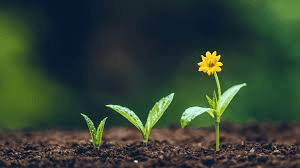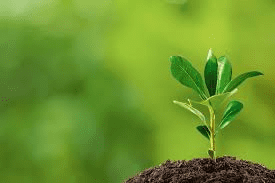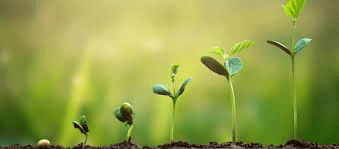Plant development is the general term for changes in form brought about through growth and differentiation. Because post-mitotic expansion processes in plants are largely driven by water, growth is not necessarily associated with increase in dry mass.
Differentiation is the change in structure and function that results in cell, tissue and organ specialisation. The capacity to reverse the process of differentiation is a characteristic of the plastic nature of plant development.
Senescence and development interact at different levels. Senescence is part of the programme that specifies cell fate. It is triggered differentially in tissues and organs, resulting in complex anatomies and morphologies that change and adapt over time.
It is the means by which resources are recycled from obsolete body parts to new developing structures. Finally, variations on the senescence programme theme have been shaped by evolution to give rise to a diversity of structures within the angiosperm lifecycle.
Flower Bud Initiation and Differentiation

Flower bud formation requires a series of changes in the differentiation pattern of apical or axillary buds.
Flower bud development is a process with high level of complexity characterized by two distinct physiological phases: Bud initiation and Floral bud development.
Internal and external signals have a fine regulatory function on the timing of flowering. This is also termed the `irreversibility’ stage, to indicate a condition of the bud, which has only one ontogenic possibility, that of developing into a flower bud, or not to undergo any further development.
When the irreversibility stage is overcome, the bud is to be considered `induced’ to flower, and the next phase begins, termed `differentiation’; which is merely an anatomical phase, during which the typical tissues of flower structures are formed, and which is concluded immediately before anthesis.
The transition between the juvenile and adult phase is characterized by changes in meristerm sensitivity to internal and external signals of flower induction. At maturity, buds become competent to respond to induction.
Once a meristerm has been determined to be productive, it follows its program even in the absence of inducing stimuli.
On the other hand, the capacity to respond to induction signals for reproductive development depends on the physiological state of the plant or some plant part.
The time of flower induction is harder to detect, mostly because the modifications involved are of a physiological nature, and therefore not detectable microscopically.
In addition, this phase has a duration that does not depend so much on the length of the process in the individual bud, but takes place gradually at different times in different parts of the canopy, in both deciduous and evergreen species.
Factors Affecting Induction and Differentiation

This can be broadly divided into two: environmental and internal factors.
1. Environmental factors
Time of the year: Under common natural conditions, flowering of seed plants takes place after the formation of vegetative organs or, more precisely, after they have passed the young age or juvenile stage.
In many plants, the duration of the juvenile period depends on their sensitivity to photoperiodic and thermal induction.
Photoperiodism: Day length, as an astronomic phenomenon, has proved to be the most reliable and accurate signal informing plants when they must flower and propagate and when they must be ready to survive unfavorable environmental conditions.
Read Also : List of Diseases Ruminant Animals (Livestock) Get from Feeds and Water
As a result of the photoperiodic effect, leaves become physiologically transformed, which are biophysical and biochemical in nature. These transformations result in the formation of certain metabolites, some of which, under favorable day-length conditions, are necessary for flowering.
Intensity and quality of light: Since in the total absence of light flower induction cannot take place, because leaves are the main seat of the events leading to flower induction.
The sun provides the energy required for various physiological functions of plants. Excessive cloud cover lowers the quality and intensity of light and the temperature of the plant environment.
Moisture conditions: Moisture is central to the growth and performance of plants. Insufficient moisture supplies to flowering plants causes flower abortion and pre-mature drops of formed buds.
Mineral nutrition: The role of nutrients in flowering plants is very important. Sugars formed in the process of photosynthesis and nitrogenous compounds introduced through plant’s roots were considered of primary importance in Klebs’s theory which showed that all conditions essential for flowering are also favorable for photosynthesis and consequently for the accumulation of carbohydrates in plant organs.
2. Genetic factors
Genetic factors find their expression in the very division of plants into perennial and annual, winter and spring, late and early.

Plant Senescence
Senescence is a terminal stage of plant development. It often, but not invariably, ends in the death of cells, tissues, organs or the whole plant.
At the cell level there are a number of different senescence pathways, most of which are autolytic, that is, the genetic and biochemical events originate within the senescing cell itself.
Nucleus, vacuole, plastids and mitochondria interact during cell senescence. Up to the point where organelle integrity is lost, some kinds of senescence may be halted, extended or even reversed by various treatments, but beyond this threshold there is a rapid decline in viability leading to death.
Developmental cell senescence and death occur during differentiation of xylem, floral tissues, embryos and seeds. Leaves, fruits and some flowers lose chlorophyll during senescence as chloroplasts differentiate into pigmented plastids.
The products of chlorophyll breakdown are deposited in the cell vacuole. Proteins and nucleic acids are hydrolysed and the nitrogen and phosphorus liberated are exported from the leaf to sink tissues.
Fruit ripening shares a number of regulatory and biochemical features with leaf and flower senescence. Senescence contributes to root turnover, an important factor in global carbon balance.
Plants and their parts often must attain maturity before they are able to respond to signals that induce senescence. Floral induction and seed formation stimulate senescence. In monocarpic species the entire plant undergoes reproductive death.
Polycarpic plants flower repeatedly during their lifetimes, and show no clear relationship between senescence and longevity.
Senescence is a strategic and tactical response to seasonal and unpredictable stresses, including changing day length, flooding, drought, excessive light, darkness, nutrient limitation and disease.
Plant Death
Plant death is a condition or a state and is the culmination of and separate from, the process of dying. Application of the term “cell death” to the physiology of senescence, though widespread, seems inappropriate.
Read Also : How to treat Ruminant Animal Diseases
By definition, changes that occur in dead cells are post- mortem and non-biological. Biologists studying terminal events in development need to distinguish between the regulated activity of viable biological structures and the pathological outcomes of organic collapse.
Total organ death does not mean that the plant is dead. Death of cells, tissues and organs are normal physiological processes of plant development. As tissues and organs die, so are new ones formed though automatic replacement.
In summary, flower bud formation requires a series of changes in the differentiation pattern of apical axillary buds. Flower bud development is a process with high level of complexity characterized by distinct physiological phases.
All these changes and reactions during flower bud initiation, senescence and death are adaptive strategies for survival under unfavourable weather conditions in different seasons of the year.
Cell, tissue and organ differentiation is the change in structure and function that results in cell, tissue and organ specialization. The capacity to reverse the process of differentiation is a characteristic of the plastic nature of plant development.
Factors affecting induction and differentiation can be broadly divided into two: environmental and internal factors. Senescence and development interact at different levels.
Read Also : Implementation of Forest and Wildlife Policy
Frequently Asked Questions
We will update this section soon.
